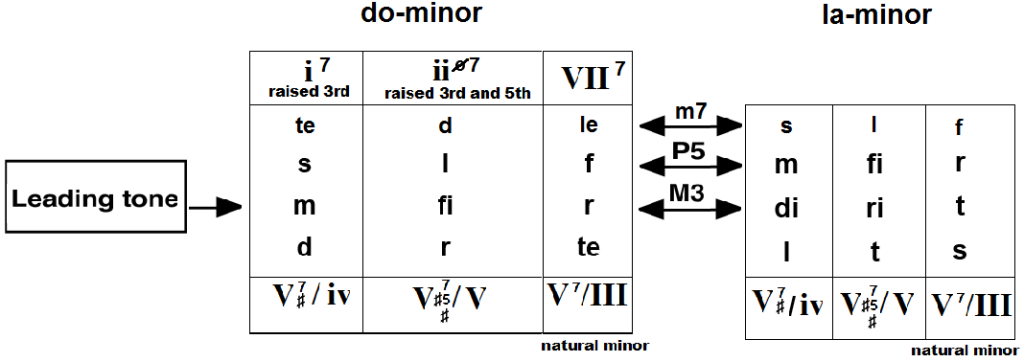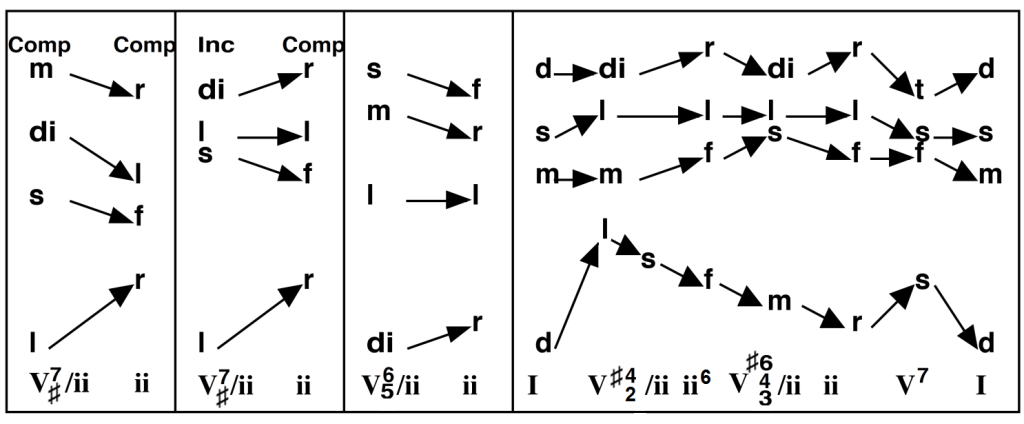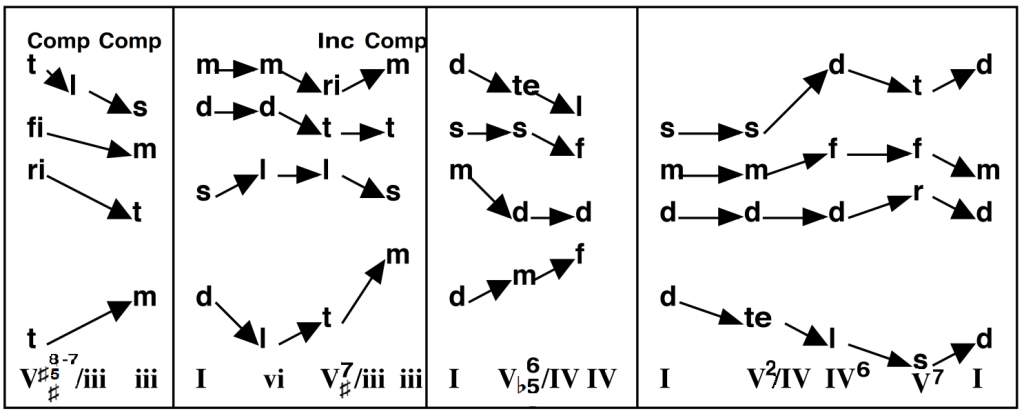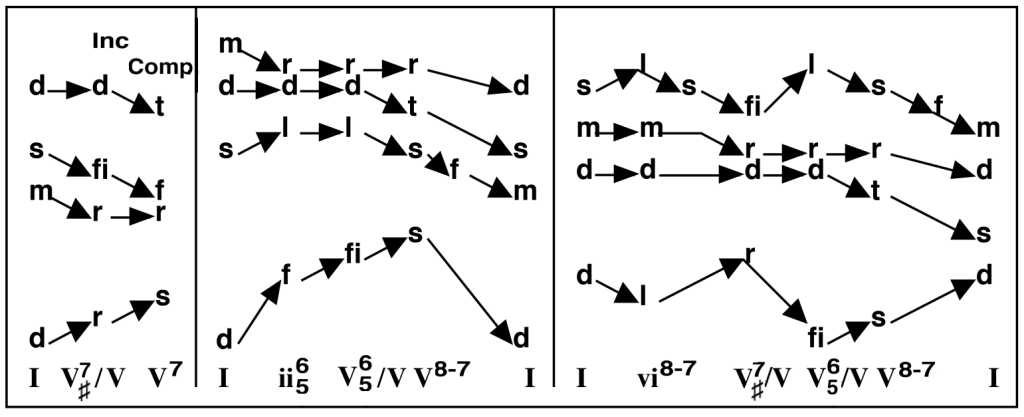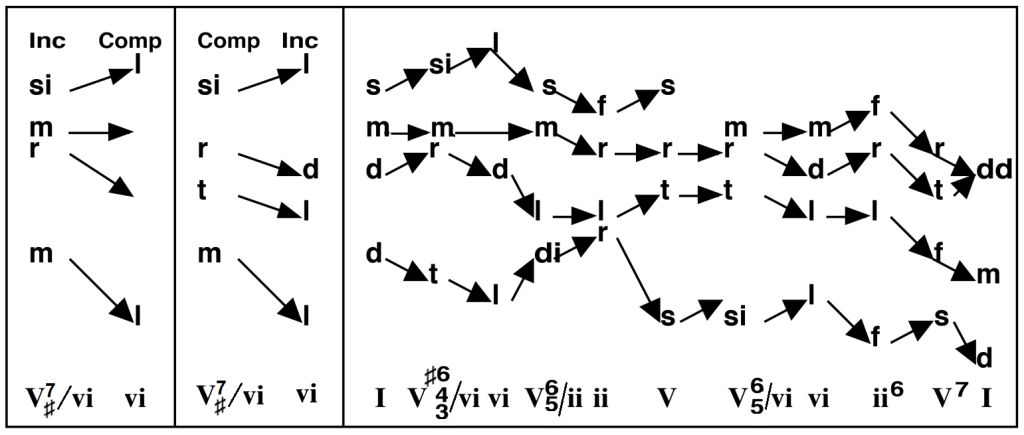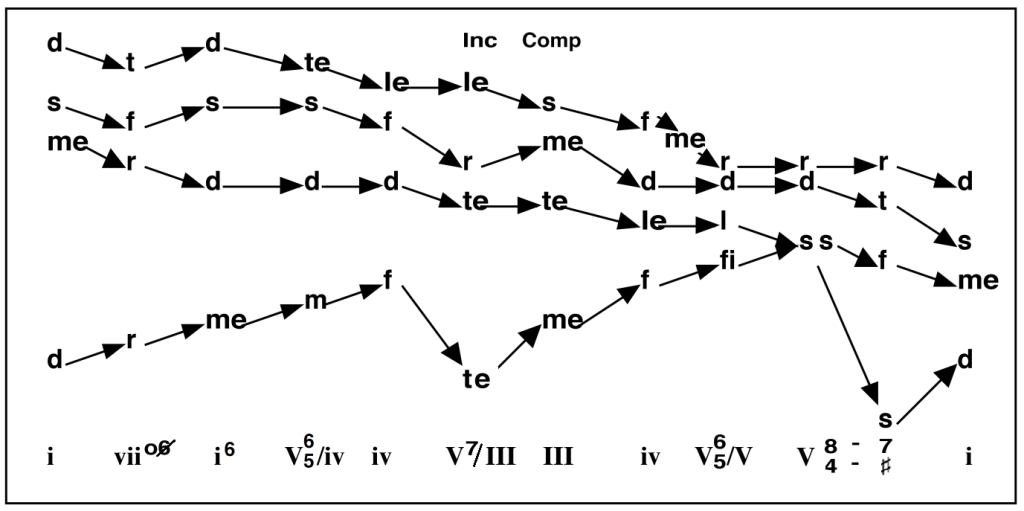19 Secondary Dominants
In the example below, the 3rd of the ii (Dm) chord is raised and the resulting D major chord temporarily acts as the dominant of V. The secondary dominant produces a chromatic line fa – fi – so, with fi being the leading tone of the V chord. The resolution makes the V chord sound like a temporary tonic.
The chord of resolution remains in the original key and no modulation occurs. The procedure is called a tonicization.
Secondary dominant seventh chords in root position have the same complete and incomplete forms as the V7 chord and resolve accordingly. Resolve the dissonant seventh down (“fa – m”) and the leading tone up (“ti – do”), except when “ti” is in an inner voice, where it may drop to “so” as in diatonic harmony.
Inversions of secondary dominant seventh chords resolve the same way as the inversions of the dominant seventh chord.
Major
Minor
-
To create a secondary dominant from a minor triad, the 3rd of the chord is raised (
 3).
3). -
To create a secondary dominant from a diminished triad, the 3rd and the 5th of the chord are raised (
 3,
3,  5).
5). -
To create a secondary dominant seventh chord, add a minor 7th to a major triad.
-
All alterations are accounted for in the figured bass.
I. secondary dominants in MAJOR
The V(7) of the ii, iii, IV, V, and vi triads are available in major keys.

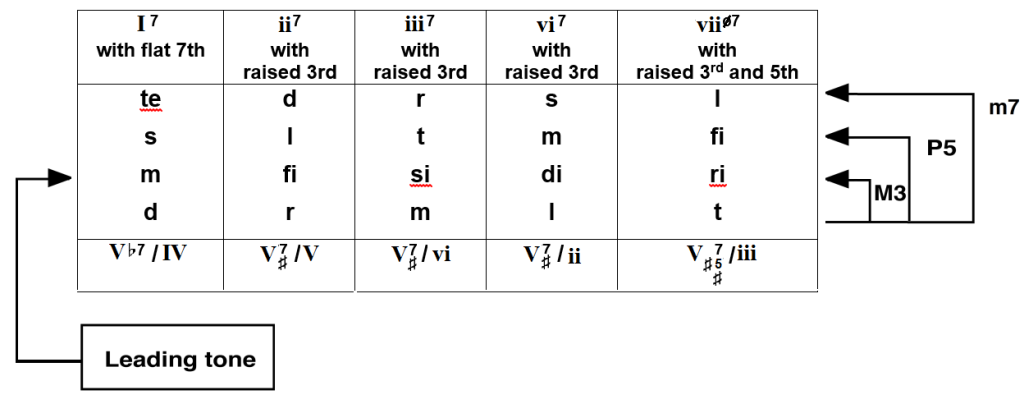
II. secondary dominants in MINOR
The V(7) of the iv, V, and III triads are available in minor keys.
Voice Leading
1. Secondary dominant of ii. Major keys only.
In minor keys, the secondary dominant of iio does not exist, since the dominant resolves to a major or minor chord only.
2. Secondary dominant of iii and IV in major, III and iv in minor
3. Secondary dominant of V in major, V![]() in minor
in minor
4. Secondary dominant of vi
The last example does not work in minor due to the presence of the secondary dominant of iio.
5. Secondary dominants in minor
6. Secondary dominants in sequences
The circle of fifths sequence can include secondary functions with each secondary chord resolving to V or V7 of the next chord in the sequence (see chapter on Chromatic Sequences).
Practice

